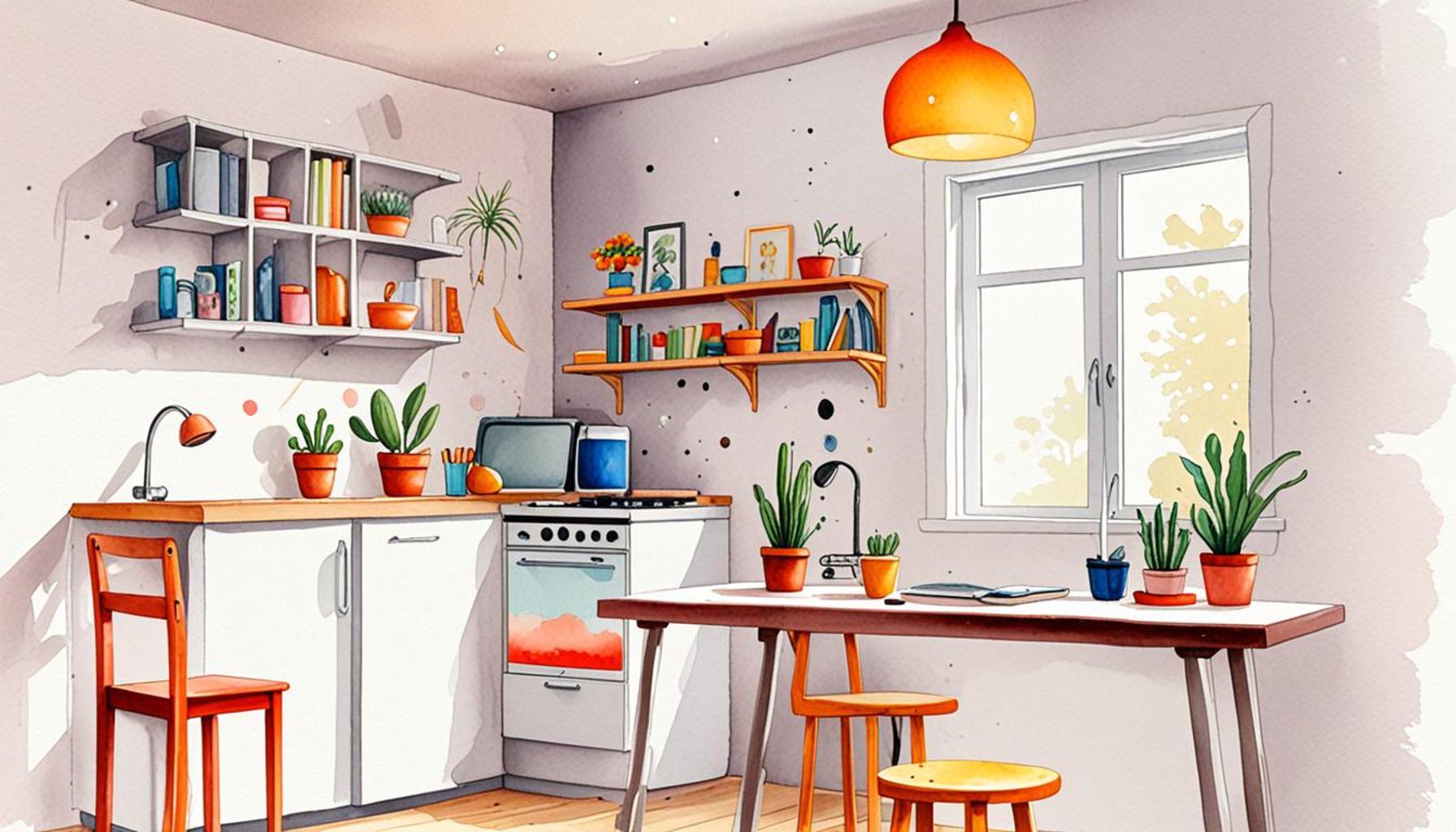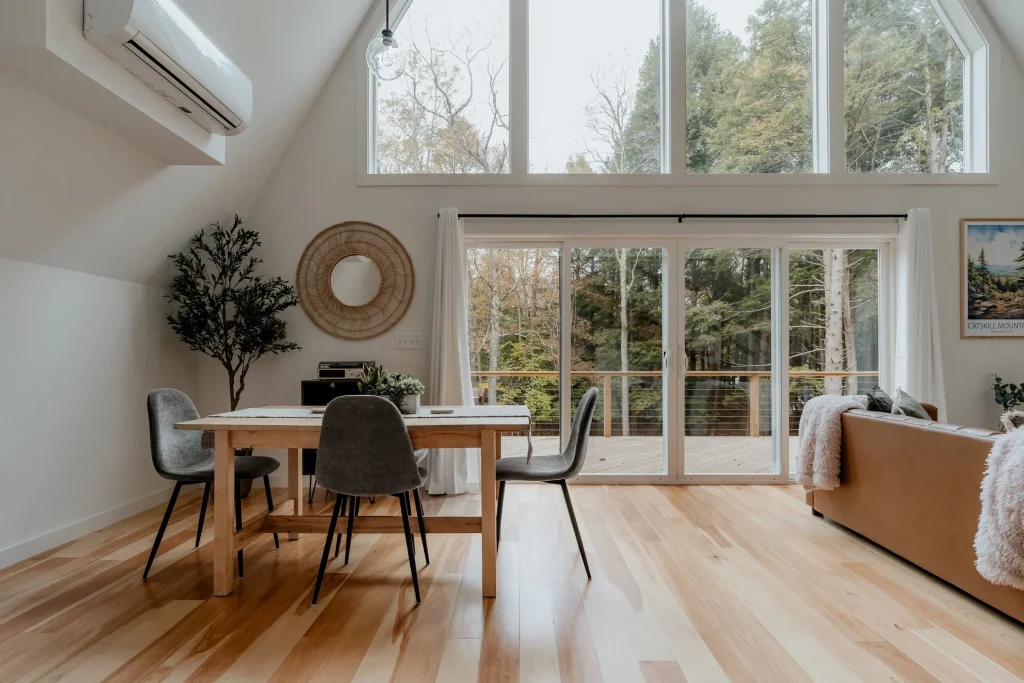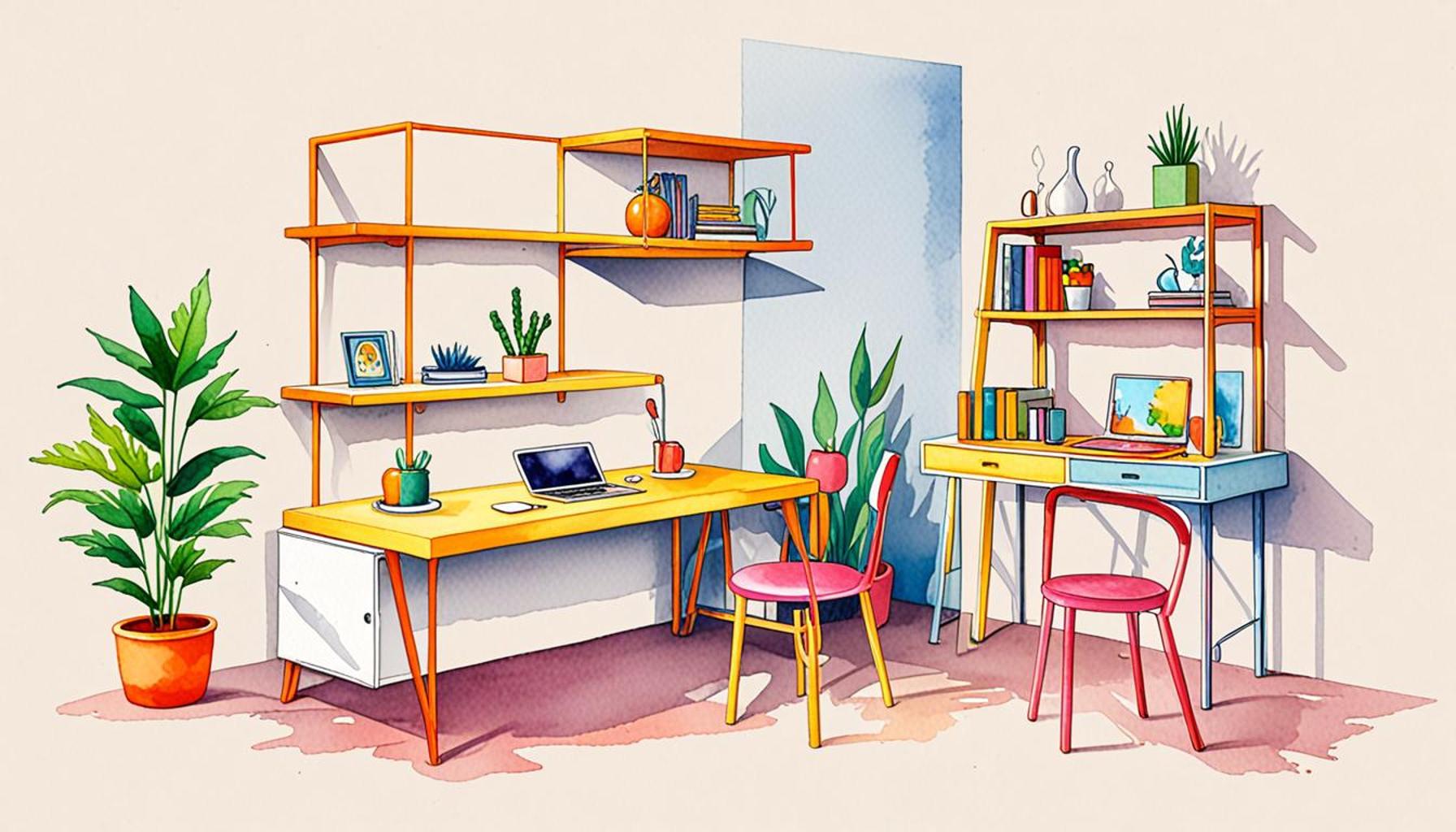How Minimalism Can Transform Small Spaces into Functional Environments

The Appeal of Small Living Spaces
In recent years, urban centers across the United States have seen a surge in demand for smaller living spaces. With cities becoming increasingly congested and property prices soaring, many individuals and families are embracing the concept of minimalism. This lifestyle embraces simplicity, prioritizing functionality over excess and allowing residents to lead more intentional lives.
The essence of minimalism is more than just a design aesthetic; it’s a profound shift in how we think about our living environments. By focusing on eliminating clutter and choosing designs that emphasize utility, we can cultivate spaces that are not only visually appealing but also incredibly practical. For instance, a small living room can be transformed by incorporating a sleek, compact sofa that doubles as a bed for guests, or a coffee table that provides hidden storage for books and remote controls.
- Maximized Space: Innovative furniture choices, like wall-mounted desks and nested tables, can free up essential areas, allowing for increased movement and flexibility in smaller rooms.
- Increased Organization: Minimalism inspires the adoption of effective storage solutions such as modular shelves or under-bed storage bins that encourage tidiness while providing accessible organization.
- Enhanced Productivity: Studies have shown that a tidy environment can significantly boost focus and creativity. A clean, organized workspace, even in a small corner of your home, can greatly improve one’s efficiency.
Imagine converting a small apartment’s limited space into a multifunctional area that meets your every need. A well-thought-out design can allow residents to enjoy a cozy living area that serves as both a lounge and office, facilitating a work-from-home lifestyle that many have adopted in recent times.
Additionally, minimalism offers a solution to the overwhelming consumption often seen in contemporary society. By choosing quality over quantity, individuals can invest in fewer but more meaningful items that enhance their lives without unnecessary distractions. The financial savings associated with this approach can be considerable, freeing up funds for experiences rather than excessive possessions.
Exploring the principles of minimalism not only simplifies the home but also streamlines maintenance and fosters mindfulness about the use of space and resources. In this article, we will delve deeper into the transformative effects of minimalism, providing insights and practical tips on how to optimize small environments for greater functionality, inspiring you to rethink your living space.

DISCOVER MORE: Click here to enhance your workspace
Redefining Functionality in Limited Areas
The adoption of minimalism in small spaces is a powerful approach that redefines functionality without sacrificing comfort. When space is at a premium, creativity becomes essential. One of the most significant advantages of a minimalist lifestyle is the freedom that comes from simplifying choices. By reducing distractions and focusing solely on what adds value to a home, residents can create an environment that nurtures both work and relaxation.
It all begins with understanding the relationship between design and utility. Selecting furniture that serves multiple purposes is a cornerstone of minimalist design. For example, a stylish ottoman can provide seating while also functioning as a storage compartment, effectively combining function and style. Similarly, incorporating foldable furniture, such as collapsible dining tables or Murphy beds, emphasizes the use of space while adapting to different situations.
Another crucial element of maximizing small spaces is the use of color schemes and light. Light colors and natural lighting can significantly enhance the perception of space. Painting walls in soft, neutral tones can make rooms feel larger, while strategically placing mirrors can reflect light, creating an illusion of depth. This design technique not only makes the environment more inviting but also fosters a sense of tranquility—essential in today’s fast-paced lifestyle.
- Smart Storage Solutions: Utilizing vertical space through tall bookshelves and wall-mounted storage units helps clear floor areas and keeps essentials within easy reach without crowding the environment.
- Room Dividers: Using open shelving as a room divider can create distinct areas within a small apartment. It adds a sense of openness while delineating space for specific functions, such as a living area from a workspace.
- Quality Over Quantity: By investing in a few quality pieces that offer both beauty and functionality, residents can avoid clutter, focusing instead on fewer, more impactful items that resonate with their lifestyle.
These strategies exemplify how minimalism promotes thoughtful design choices tailored to individual needs. For instance, a small studio can easily transition from a vibrant daytime workspace to a serene nighttime retreat, all through the purposeful arrangement of furniture and decor. Embracing minimalism means not being restricted by size but instead allowing space to adapt seamlessly to its functions.
Furthermore, the philosophy of minimalism extends beyond aesthetics. It encourages an intentional approach to consumption, prompting individuals to evaluate their belongings critically. By letting go of items that no longer serve a purpose, residents create a more harmonious living environment that echoes personal values and priorities. This attitude not only optimizes space but also fosters a deeper appreciation for what one chooses to keep in their home.
As we delve further into the transformative effects of minimalism, it’s vital to recognize how adopting these principles can lead to greater satisfaction in daily living, ultimately turning ordinary small spaces into extraordinary, functional environments.
| Category | Description |
|---|---|
| Space Efficiency | Maximizing the functionality of every square foot is a key principle of minimalism. By carefully selecting furnishings, you can create multi-functional spaces that serve various purposes without clutter. |
| Aesthetic Appeal | Clean lines and simplicity create a visually calming environment that enhances the perception of space. This minimalist aesthetic contributes to a more inviting atmosphere, making small areas feel larger and less chaotic. |
Exploring the aesthetics of minimalism reveals that simplicity can significantly impact small environments. Using neutral color palettes and essential décor enhances both light and space, ensuring a serene setting. For example, opting for open shelving instead of bulky cabinets not only maintains a sense of openness but also allows for easy access and display of items.In addition, minimalism encourages mindful consumption. Homeowners learn to prioritize quality over quantity, selecting versatile furniture and décor that serves multiple functions. This approach not only saves money in the long run but also helps in maintaining a neat and organized environment—an essential aspect when dealing with limited space.Also, incorporating elements like mirrors strategically can amplify light and visually expand dimensions, adding depth to otherwise confined areas. Research shows that *well-placed lighting* can dramatically enhance functionality, making spaces feel airy and alive.The transformation achieved through minimalism is not merely physical; it fosters a lifestyle focused on clarity and purpose, leading individuals to appreciate their surroundings more profoundly. By embracing minimalist principles, one can not only enjoy a functional space but also a rejuvenated state of mind.
DISCOVER MORE: Click here for minimalist organization tips
Innovative Techniques to Enhance Small Space Living
As urban living becomes increasingly confined, the importance of innovative design in small spaces cannot be overstated. Minimalism offers more than just aesthetic appeal; it invites creative strategies that can dramatically enhance functionality. When guided by the principles of minimalism, you can transform cramped quarters into a sanctuary of order and ease.
One effective technique involves incorporating multifunctional spaces. For instance, in a tiny apartment, a living room can double as a guest bedroom, seamlessly transforming from a space for relaxation into one for hosting overnight guests. By utilizing modular furniture—like a sectional sofa with a pull-out bed—residents achieve a blend of style and practicality. This flexibility not only optimizes the available space but also reduces the need for excessive furnishings.
Natural elements can also play a vital role in crafting functional environments. Bringing in plants introduces a sense of life while enhancing indoor air quality. Strategically placing greenery on shelves or using wall-mounted planters keeps floors clear and adds character. Moreover, biophilic design—an approach that creates a connection with nature—can elevate mood and productivity within limited areas.
- Built-in Furniture: Customized built-in storage solutions make the most of every nook. Consider benches with concealed storage or wall-integrated desks. Such installations create a clean aesthetic while serving dual functions.
- Neutral and Textural Layers: To keep the visual clutter at bay, neutral palettes with textural layering—think of cozy throws and decorative cushions—allow you to add depth without overwhelming the senses. This layering can differentiate areas within a single room without the need for physical dividers.
- Tactical Lighting: Lighting can redefine spatial perceptions. Smart lighting solutions, like LED strip lights under shelves or accent lighting to highlight artwork, can create atmosphere and feature different areas of a room, enhancing its functionality.
Small bathrooms and kitchens also benefit from minimalist principles. In these areas, it is essential to adopt efficient design practices such as open shelving. Open shelving not only provides storage but also creates an illusion of space and accessibility. A floating vanity in the bathroom preserves essential items while providing a contemporary touch, utilizing otherwise wasted vertical space.
Moreover, embracing technology can greatly enhance living in small spaces. Smart home devices can efficiently manage lighting, climate, and security, allowing residents to optimize their environments even further. Incorporating smart speakers and multi-use entertainment systems can also reduce the number of devices required, fostering a sleeker and uncluttered atmosphere.
As people continue to navigate the demands of modern life, the minimalist approach shines a light on possibilities often overlooked. By considering how each element of a small space works together, individuals can foster a sense of harmony and purpose, making every square inch count. With these strategies, minimalism empowers residents to curtail the chaos of clutter, embrace functionality, and ultimately transform small spaces into fulfilling retreats that reflect their unique lifestyles.
DISCOVER MORE: Click here for tips on maximizing space
Conclusion: Embracing Minimalism for Enhanced Living Spaces
In an era where urban living spaces are continuously shrinking, embracing a minimalist lifestyle can provide a powerful solution for optimizing functionality without compromising on style. The strategies outlined in this article highlight how minimalism is not merely a design choice, but a transformative approach that allows individuals to unlock the true potential of their small spaces. By integrating multifunctional furnishings, promoting natural elements, and implementing innovative lighting, residents can cultivate environments that are both practical and visually engaging.
Furthermore, the incorporation of smart technology and efficient design practices heightens the level of convenience while preserving the essence of minimalism. As individuals adopt this mindset, they learn to appreciate less as more, fostering a sense of clarity and peace within their homes. Ultimately, minimalism empowers individuals to distill their spaces to what truly matters, creating serene retreats that embody both functionality and personal expression.
As we navigate the complexities of modern life, the opportunity to transform small areas into havens of efficiency and tranquility becomes increasingly significant. By focusing on intentional living and mindful choices, anyone can explore the boundless possibilities that minimalism has to offer. This gradual shift towards simplicity not only enhances daily routines but also encourages a deeper connection to one’s environment—one that is restorative, purposeful, and immensely rewarding.


